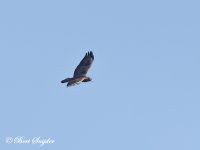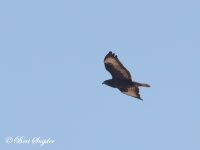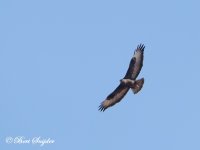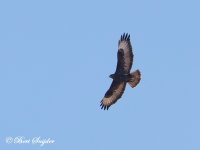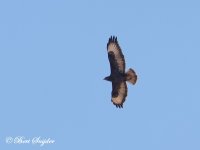Bert, although Robin is an abundant winter visitor to your/my area, there is (and always has been) a solid breeding population in south west Portugal. They are somewhat more discreet than our winter visitors and breed mainly in shady areas in Oak woodland. The Greylag is interesting, though there is a breeding pop in Doñana, apparently derived from winter visiting wild birds.
The accepted records of (Atlas) Long-legged Buzzard in Portugal have always been pale birds, and of classic appearance. It seems that there are hybrids with Common Buzzards (often nicknamed "Gibraltar Buzzard"), especially in the Alentejo region. This makes it a complicated matter! I'm not suggesting your bird may be a hybrid, Tom is right on the button with the comment about dark birds being of the east.
"The" Steppe Eagle is still around I think - and sighting of a possible second bird (?).




